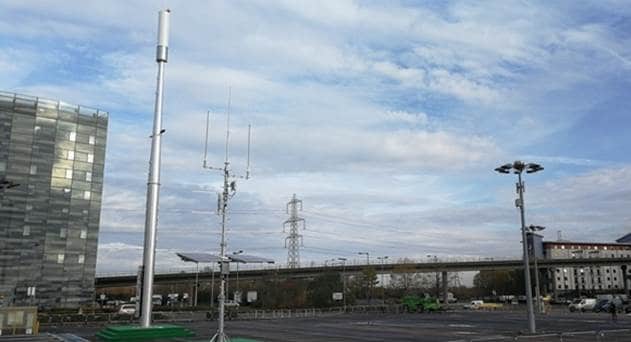Huawei has released a new all-in-one small footprint macro base station solution, TubeStar featuring a 2 m2 footprint, which it claims is 90% lower than that of traditional macro base stations (30 m2 to 60 m2).
This solution targets three customer pain points, namely high urban macro site deployment cost, difficult site acquisition, and poor deployment efficiency. The TubeStar solution breaks the boundary of traditional product and takes into account the combined costs of civil work, power supply, transmission, and base station equipment.
The ingenious design of site and system enables easy heat dissipation inside the sealed compartment. The tube is turned into a cabinet with abundant vertical installation space for the radio frequency (RF), baseband, transmission, and power supply modules and batteries as well.
The TubeStar solution not only accommodates current network requirements but also allows for future evolution. A single site supports five to seven band multi RAT (GSM/UMTS/LTE) and 5G-oriented evolution. With such capabilities, TubeStars can effectively assist operators to assume an early lead in 4.5 and 5G construction.
With TubeStars, operators no longer need a dedicated tower, cabinet, and equipment room for each site, which means the rental cost is greatly reduced. The all-device-in-tube design allows TubeStars to blend seamlessly into native environment, satisfying municipal requirements. Site approval becomes quicker and site loss rate is effectively reduced.
The small footprint also enables flexible site selection. In the past, operators must negotiate with individual land owners for each site addition. Now, they can obtain site resources in batches from the governments. As parts of TubeStars' devices and cables are preinstalled before delivery, on-site cabling and installation can be completed in one go. The deployment efficiency jumps by 70% compared with the traditional approach. What's more, TubeStars also reserve installation space for street lamps and surveillance cameras, turning resource sharing between municipal projects and base stations into reality.
According to Huawei, the TubeStar trials are now taking place on 12 networks in nine Latin American countries, and Brazil is the first country to deploy the solution for commercial use. TubeStars have been proved to be the perfect answer to the persistent site acquisition issues in scenic spots and high-end residential areas. The solution also reduces civil work and site rental costs, and has the potential to generate an estimated 40% total cost of ownership (TCO) reduction in five years, claims Huawei.




















